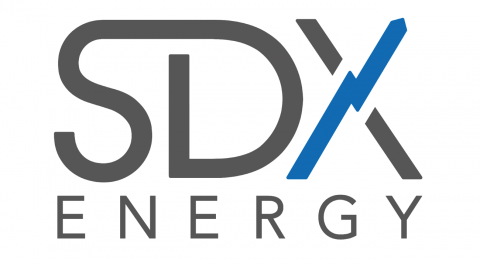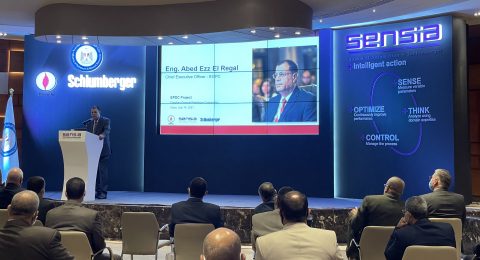Anthropogenic CO2 emissions are among the most unwanted side effects of civilization. However, industrial solutions are at hand for capturing and sequestration of CO2. Drawing on hundreds of front-end engineering and design studies, Siemens analyzed three general scenarios to identify appropriate re-compression solutions
Man-made CO2 has raised the level of atmospheric CO2 significantly beyond historic levels. The scientific community notes a direct correlation between atmospheric concentrations of CO2 and other greenhouse gases, and increasing average global temperatures. The challenge now is to ensure reliable, sustainable and economic power supply to match the world’s growing energy demand whilst keeping greenhouse gases within the “acceptable level”, knowing that for decades to come fossil fuels will continue to play an important role. High-efficiency, fossil-fueled power plants fitted with CO2 capture and storage (CCS) technology offer a short to mid-term solution to achieve low-CO2 electricity supply. There are three different CCS technologies: Pre-Combustion Capture; Post-Combustion Capture; and Oxyfuel technology (see illustration A).
Selecting scenario
All of the above three processes need dedicated compression solutions. Over the past two years, Siemens has supported hundreds of projects in different stages, from feasibility concepts to FEED-phase support and firm bids. These projects were primarily for CCS, but also included enhanced oil and gas recovery (EOR, EGR). They provided a priceless basis to design three scenarios that would allow determining optimum compression solutions for any given set of performance requirements. Scenario A is characterized by the lowest compression power for CO2, as can be seen by the high gradient of the depicted compression arrow. However, unless installation is in Artic or Antarctic latitudes providing economically reasonable recooling, (as in the Siemens Hammerfest reference), a dedicated refrigeration cycle will be needed, using up all the power benefits while increasing system complexity.
Scenario B uses ambient site conditions for supercritical recooling. The required compression power is higher than for scenario A, but still lower than for scenario C. From the overall power perspective, this compression path seems to be the most promising. However, the challenge is to properly address the CO2 behavior, which still shows considerable compressible behavior at high temperature sensitivity.
Scenario C investigates a compression path in the gas phase with consecutive compression in the light-density supercritical area. Along the complete path, the fluid behavior can be modeled via conventional gas dynamics. According to Siemens concept studies power consumption will be about 7 percent higher than with scenario B. Yet, for the first phase scenario C was the chosen focus due to the overall concept evaluation, which takes into consideration such important factors as power balance, performance predictability, performance safety, reliability, up-to-date reference situation and timeline.
Selecting compressor technology
With the compression path of scenario C chosen, it was time to determine the most suitable compressor technology. The choice was between a single-shaft compressor or an integrally geared compressor. For the investigation and comparison, Siemens mirrored all significant parameters for flow, pressure, gas composition, feed flows and gas treatment, control flexibility/speed, driver type and so forth. The compression duty was identical for the two solutions: 300 tons per hour of wet CO2 with a specified pressure ratio of 1.9 bar to 160 bar.
Solution A was a two-casing single-shaft compressor train, totaling four process stages, and driven by a variable-speed drive system directly coupled to the LP casing. The LP and HP casings were selected in back-to-back arrangement providing three intercooling steps — the classic set-up concept for petrochemical installations in fertilizer units with a focus on robustness and highest availability. Solution B was a seven-stage integrally geared compressor, type STC-GV (80-7), driven by a fixed-speed drive on the central bull gear. Thanks to the speed flexibility of each impeller pair, an optimum flow coefficient for highest efficiency can be achieved for the individual impeller. This concept has its origin in the air separation market with the focus on highest efficiency solutions and high availability. The integrally geared compressor wins the day
Computing the performance of the two compression solutions in the three scenarios determined a clear winner. On three valid counts, the integrally geared compressor showed its superiority for CO2 re-compression — less OPEX, less CAPEX, and more flexibility.
Less OPEX
Both concepts are suitable for wet-CO2 compression even under sour-gas conditions as specified by the National Association of Corrosion Engineers (NACE). However, power consumption being the key differentiator between the two concepts, there is a striking life cycle cost advantage for the integrally geared compressor. A benefit of 4,890 kilowatt (kW) or 13.9 percent of installed coupling power can be achieved for the main operating point “Rated”, and of 3,937 kW or 13.4 percent at “Normal” part-load. This part-load advantage is further supported by a larger performance- map turndown ratio using inlet guide vane control in comparison to the speed control of the single-shaft solution. This benefit is due to higher impeller efficiency with axial flow intake in combination with high head-coefficients and the flexibility to adjust the speed for optimum flow coefficients.
Less CAPEX
In addition to the OPEX benefits, the investment cost for an integrally geared compressor is lower than for a single-shaft compressor train, due to the compact design with fewer impellers and smaller impeller diameters. This also means that the installation weight is considerably lower and less space is required, cutting expenses for ground, concrete work and civil engineering. An additional advantage is that complete packaged units can be realized with coolers installed in steel frames and completely assembled piping including anti-surge loops. This enables single-lift units, requiring less site-installation time, and reducing piping interfaces to a minimum.
Better Flexibility
As far as machine robustness is concerned, permissible nozzle loads, forces and torques of integrally geared compressors require a closer look and will be calculated on a case-bycase basis. If necessary, compensators can be installed on the interfaces to the suction and discharge piping to equalize excessive loading. Another major advantage of the integrally geared compressor is its flexibility for intermediate control of pressure/temperature or flow, enabling distinct conditions to be controlled throughout the compression chain within one single compressor. This is particularly useful when controlling pressures for feed or extraction flow, or pressures on process-gas treatments like dehydration. The speed-controlled single-shaft compressor has only one degree of freedom. As for availability, both compressor concepts are in the 99-percent range, and both are applied in critical compression services, underlining the credibility of the technology. Considering CAPEX and OPEX, and following the intense research and development in accordance with current and upcoming CO2 project requirements, integrally geared turbo compressors incorporate the optimum design concept for economic CO2 compression. Siemens has the solution and the experience, having to date already installed more than 1,000 integrally geared air turbo compressors.







